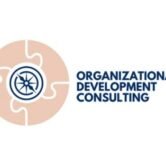How to Build A High-Performance Culture in 2024

Creating a high performance culture is now more important than ever. With the increasing challenges and complexities of the global marketplace, companies that can develop a foundation of dedicated, motivated and agile employees will undoubtedly stand out and thrive.
Year after year, the strategies for creating a high performance culture may evolve. Still, the fundamental principles remain the same: aligning your team around a shared vision. This fosters an environment for growth and recognizes the value of each individual.
Below, we explore how to build a high-performance culture in 2024. Keep reading to discover actionable insights for propelling your company ahead.
What Is a High Performance Culture?
Creating a high performance culture involves fostering an environment within your organization where employees are engaged, motivated and empowered to excel. It emphasizes continuous learning and improvement, open communication and collaboration, ultimately leading to higher productivity and lasting business success.
Building a High Performing Culture for Your Workplace
Building a high performance culture should be considered a priority by organizations aiming for both employee satisfaction and increased profitability. However, it involves more than just having a set of shared values or a strong company mission. Instead, it displays a collective commitment to upholding high-performance standards and adapting to emerging challenges.
So, how can you create a high performing culture for your organization? Here are the most crucial factors to consider:
1. Clearly Define and Communicate Core Values
Core values are the cornerstone of a high-performance culture. They act as guiding principles that influence the behavior, decisions and actions within an organization. Clearly defined core values help align the team with the company’s mission and vision, creating a unified sense of purpose.
Employees who understand and embrace the company’s core values are more likely to be engaged, motivated and committed to their work. This alignment not only improves individual performance but also drives collective success.
Tips for Integrating Core Values Into Daily Work:
To ensure that core values become an integral part of your organization, they must be integrated into daily operations. Here’s how you can do that effectively:
- Encourage employees to use the core values to guide decision-making and problem-solving.
- Include core values in performance reviews and goal-setting processes to ensure they are reflected in individual objectives.
- Offer continuous training and development opportunities that align with these values. This helps employees embody them in their roles.
- Be consistent in incorporating core values into every aspect of work life. This way, they become the driving force behind your organization’s success and not just some words on a wall.
2. Hire and Retain Top Talent
A high-performance culture depends on the skills and dedication of its employees. Skilled workers bring expertise, innovation and efficiency, propelling the organization toward its goals with greater agility.
The right talent can improve team dynamics, bring new ideas and solve complex problems. This creates a work environment where high performance is the standard. Additionally, top talent is often more engaged and motivated, leading to higher productivity, better customer service and improved financial performance.
Best Practices for Recruiting Top Talent:
Keep the following practices in mind when seeking to hire the best professionals within the industry:
- Start by defining clear job descriptions accurately reflecting the skills and experience needed.
- Use multiple channels to reach a diverse pool of candidates, including job boards, social media and professional networks.
- Implement a thorough and structured interview process to assess technical skills and cultural fit.
- Consider using assessments and practical tasks to evaluate candidates’ problem-solving abilities and real-world application of their skills.
- Promote your company’s culture, benefits and growth opportunities to attract the ideal job candidates.
Employee Retention Tactics:
Retaining top talent is as important as recruiting them. Employ the following tactics to keep your employees happy and motivated:
- Create an environment where employees feel valued, supported and challenged.
- Offer competitive compensation and benefits packages that meet or exceed industry standards.
- Foster a culture of recognition where achievements are celebrated and contributions acknowledged.
- Provide opportunities for professional development, such as training programs, mentorship and career advancement paths.
- Encourage open communication and feedback, ensuring employees feel heard and engaged in the company’s direction.
- Work-life balance is also crucial; flexible work arrangements and wellness programs can help maintain employees’ overall satisfaction and well-being.
Investing in a skilled workforce is essential for maintaining a competitive edge and achieving long-term success. It enhances productivity and innovation while fostering a culture of continuous learning and adaptation.
3. Encourage Employee Ownership and Empowerment
When employees feel a sense of ownership, they become more committed to the results of their work, which leads to increased motivation and accountability. This empowerment encourages creativity and innovation, as workers are more likely to suggest new ideas and solutions when they have the authority to put them into action.
Moreover, decentralizing decision-making speeds up processes and improves the ability to respond to challenges and opportunities. Empowered employees often show higher job satisfaction and engagement, reducing turnover rates and creating a more motivated workforce.
Best Practices for Delegation and Trust-Building:
Effective delegation and trust-building are essential for empowering employees. Make sure to implement the following strategies in your team:
- Start by clearly defining roles and responsibilities. Employees must understand their authority and the scope of their decision-making power.
- Provide the necessary resources and support, including training and access to information, to help them make informed decisions.
- Trust-building requires consistent and transparent communication.
- Encourage open dialogue, listen to employee feedback and show appreciation for their contributions.
- Avoid micromanagement. Instead, offer guidance and mentorship to help employees develop their skills and confidence.
Creating an environment of trust and support is paramount in empowering employees to take initiative and make meaningful contributions to the organization’s success. When employees feel trusted and supported, they are more likely to proactively seek opportunities for improvement, innovate and take ownership of their work. This boosts individual performance and enhances team collaboration.
4. Implement Performance Management Processes
Monitoring and measuring performance are crucial for creating a high-performance culture. They help organizations assess progress toward goals, identify areas for improvement and recognize top performers. With clear metrics and benchmarks, teams can stay aligned with strategic objectives and make necessary adjustments. Performance data also offers valuable insights for decision-making and resource allocation, optimizing efficiency and effectiveness across the organization.
Best Practices for Setting Goals and Expectations
Goals are essential for performance management because they provide clear direction, focus and accountability within an organization. They help clarify expectations and ensure that employees understand what is expected of them in terms of performance and outcomes.
When setting goals, they should be specific, measurable, achievable, relevant, and time-bound (SMART). This ensures clarity and focus for employees. It’s also a good idea to involve employees in the goal-setting process to enhance engagement and commitment.
Continuous Performance Management Strategies
Embracing continuous performance management goes beyond annual reviews and enables ongoing feedback, coaching, and development opportunities. Encourage regular check-ins between managers and employees to discuss goals, progress, challenges, and growth aspirations. Provide constructive feedback in real-time, highlighting strengths and areas for improvement.
In addition, offer training and skill development programs that align with employees’ career goals and organizational needs. Recognize and reward outstanding performance to reinforce desired behaviors and motivate continued excellence. Organizations can nurture talent, drive results and sustain a high-performance culture by making performance management an ongoing process.
5. Recognize and Reward High Performance
Recognizing success and achievements reinforces desired behaviors, motivates employees to excel and fosters a positive work environment. When individuals feel valued and appreciated for their contributions, they are more likely to remain committed, productive and eager to contribute further to the organization’s success.
Creative Strategies for Recognition and Rewards
Let’s explore innovative approaches organizations can adopt to recognize and reward their top performers effectively:
- Personalized Recognition: Tailor recognition efforts to individual preferences and accomplishments. This could include public acknowledgment during team meetings, customized thank-you notes or one-on-one appreciation sessions.
- Peer-to-Peer Recognition: Encourage a culture of peer recognition where colleagues can nominate and celebrate each other’s achievements.
- Non-Monetary Rewards: Offer non-monetary rewards, such as extra time off, flexible work arrangements or opportunities to lead special projects.
- Professional Development Opportunities: Recognize high-performing employees by offering access to training programs, certifications or mentorship opportunities that align with their career goals. This not only rewards their efforts but also invests in their long-term growth and skill development.
- Celebratory Events: Organize celebratory events or team-building activities to recognize milestones, project completions or outstanding achievements.
- Performance-Based Incentives: Implement performance-based incentives such as bonuses, profit-sharing programs or merit-based promotions for exceptional performance. Clearly communicate the criteria for earning these incentives to maintain transparency and fairness.
Invest in a High Performance Culture for Long-Term Success
A company that understands what is a high performance culture is a company that will thrive in today’s fast-paced business world. Building a high-performance culture should be a top priority for any forward-thinking organization, as it is the backbone of success and a competitive advantage.
But the big question is – how can you achieve this goal? Simple, by partnering with experts like the HPWP Group. With our dedicated team of coaches and comprehensive training programs, HPWP Group has helped countless organizations transform their culture into one that breeds high performance.
Contact us and embark on the journey towards long-term success.










